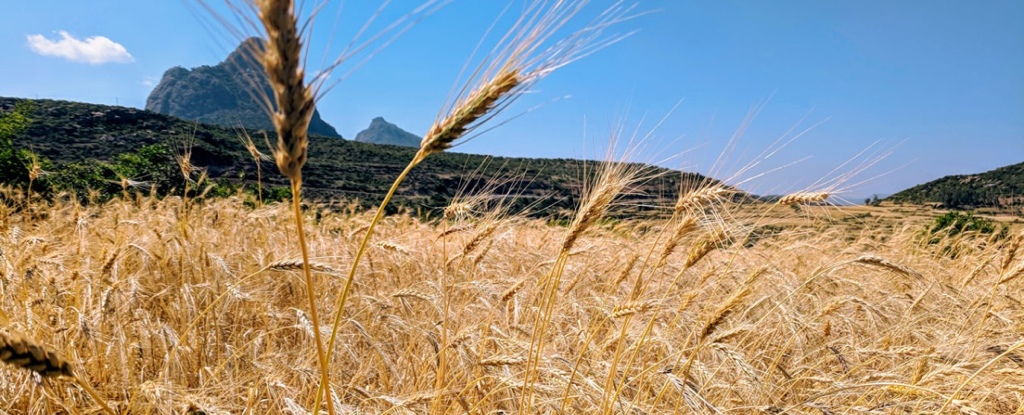As climates around the world become harsher and increasingly unpredictable, concerns about our world’s food security are increasing.
Already, Yields of staple foods such as maize and wheat are declining in tropical low-latitude regions and in arid and arid regions such as African arid regions and parts of the Mediterranean.
Wealthy countries are far from immune. Australia experienced a nearly 30 percent drop in crop yields between 1990 and 2015 due to reduced rainfall.
While studying food diversity in 2011, environmental scientist Morgan Ruelle, now at Clark University, accidentally stumbled upon a possible technique that could help stabilize crop yields.
The once widespread practice is now used only by small farms in places like the Caucasus, the Greek Islands and the Horn of Africa. While incredibly simple, most members of the agroecology community were unaware of it.
Yet farmers have been using this technique for more than 3,000 years in at least 27 countries. Maybe it was even what made agriculture come into existence in the first place.
The method involves planting maslins — a combined grain mix that can include rice, millet, wheat, rye, barley, and more — and harvesting them all together for separate use or as a single product.
For example, in Ethiopia, where Ruelle discovered the existence of maslins, Duragna contains several species and cultivars of barley and wheat, all grown together. Locals consider the mixture a crop and use it to make bread, beer and traditional canapes.
Local farmers reported that this mix ensures at least some yield under adverse conditions, and now researchers have the experimental trials to back up these claims. Ruelle and colleagues working at Cornell University conducted a review of previous work and showed that Maslins gave greater stability under changing conditions. By shifting species composition each season, farmers could hedge against climate impacts without the need for additional interventions.
“It’s this ever-evolving, responsive entity. It operates independently, outside of the farmer’s control, to react to any possible conditions.” says Ruelle. “So no matter what, you’ll be able to bake bread with it.”
The process lets the environment choose which species thrive. And as environmental conditions continue to shift in one direction, next season’s seed mix will also change with this trend.
“It’s faster than evolution. If you only had a weak strain, it would take a long time to adapt.” explained Ethnobotanist Alex McAlvay now at the New York Botanical Garden. “But when you have multiple species and multiple cultivars, these shifts can happen very quickly.”
When a drought hits, the resulting crop yield contains the more drought-resistant strains of barley and less wheat, for example. But the wheat is still there to take over when there suddenly is a rainy season.
“If one fails, at least we have the other,” a Georgian priest grows this mix told one of the researchers in 2022.
Researchers have been at it for some time to recommend moving away from monoculture farming can be beneficial in many cases, as it is much better to plant multiple types of plants pest controlFertilization, wildlife health and sustainability. However, polyculture is problematic for larger-scale agriculture that relies on machinery for harvesting and processing.
Because the same machines can be used to harvest any grain within the maslin mix, the process can be scaled up. Modern industry also has experience in sorting grain varieties on a large scale.
Maslins also produce higher yields. In a field trial, wheat and barley together performed 20 percent better than wheat alone and 11 percent better than barley alone and found another study monoculture land use would have had to be increased by 50 percent to achieve the same result for the same maslin mix over three years.
Additionally, maslins still convey many of the ecological benefits of polycultures involving wildly different plant species, such as: B. the resistance to Diseases and pests which would require less dependence on the pesticides do all sorts of damage to the wildlife.
“I spoke to some Israeli scientists who said they would never find wild wheat without wild barley.” says McAlvay. “These grains have evolved together for many, many thousands of years.”
There is also evidence that early Bronze and Neolithic farmers used maslin mixes such as emmer and spelled or einkorn.
“A mixture of wild barley (Hordeum spontaneousum) and wild oats (Avena sterilis) was cultivated at Gilgal in Israel before both were domesticated,” the researchers said write on your paper.
While many uncertainties remain to be explored, such as the tolerance of different mixes to poor soils, McAlvay and his team believe Maslins could offer tremendous benefits at all levels of agriculture, from subsistence farming to industry, particularly in areas already dealing with difficult climatic conditions are faced.
“Subsistence farmers around the world have been managing and mitigating risk on their farms for thousands upon thousands of years and have developed these locally adapted strategies to do so,” closes McAlvay. “We can learn a lot from them, especially now, at a time of climate change.”
This review was published in Agronomy for Sustainable Development.





